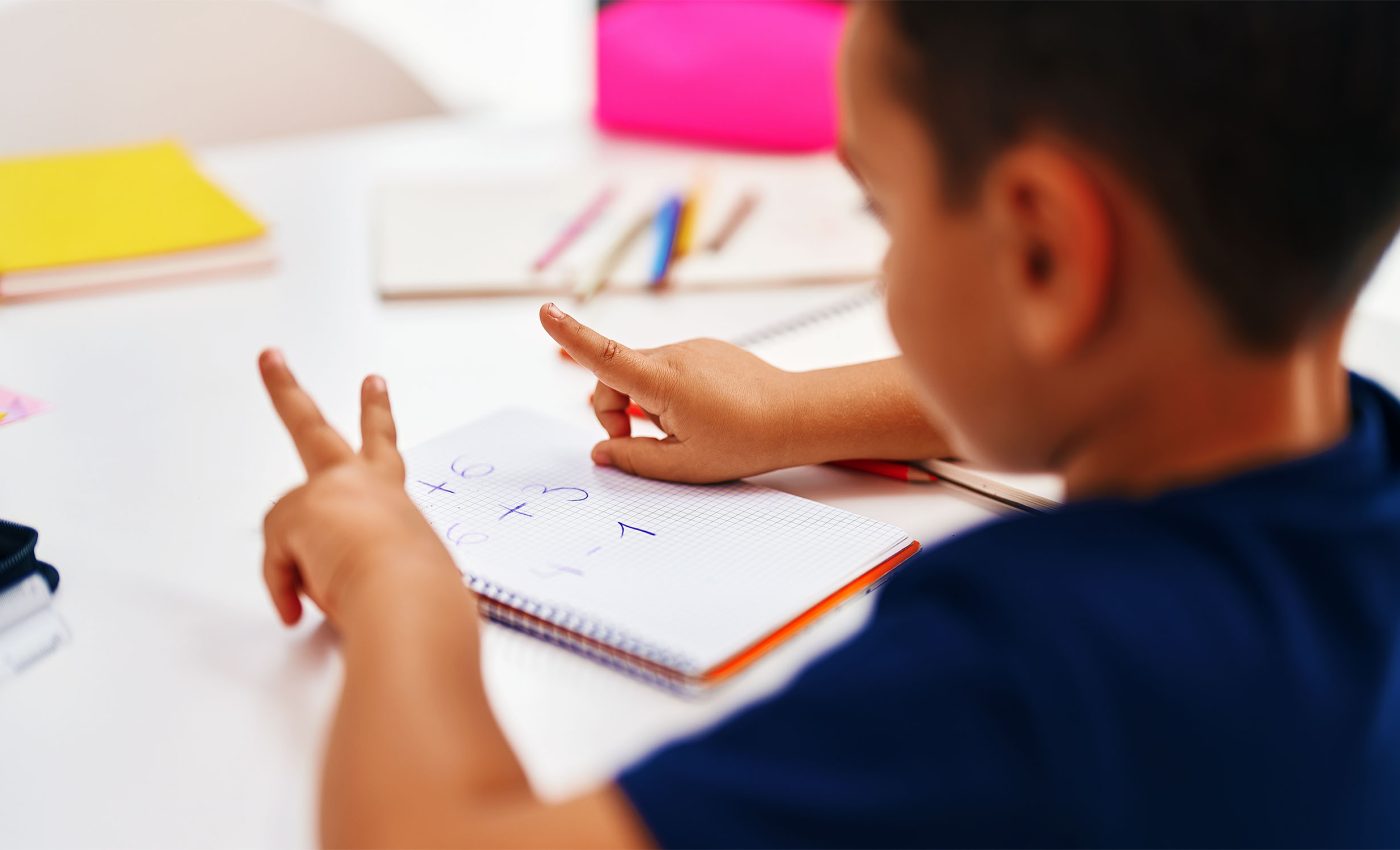
Finger counting boosts math skills in children
Have you ever found yourself in a quandary about whether children should use their fingers to count? If you have, you’re not alone. Many preschool teachers are in the same boat.
Some believe that little ones who resort to finger counting are struggling with math. Others see it as a clear sign of advanced numerical knowledge.
One of the lead researchers for this study is Dr. Catherine Thevenot from the Institute of Psychology at the University of Lausanne.
Her team decided to investigate if a finger counting strategy could give a leg up to kindergarten-aged children when faced with arithmetic problems.
Impact of finger counting on kids
The experiment, which involved 328 five and six-year-olds (mainly white European kids living in France), set out to determine if children who don’t ordinarily count on their fingers could be trained to do so. And more importantly, it sought to find out if this training would improve their arithmetic abilities.
The process was straight-forward. Recruited through their teachers, the children underwent a pre-test, a two-week training period, a post-test right after the training, and a delayed post-test.
The children who were trained and did not originally count on their fingers showed a substantial improvement in performance (from 37% to 77% of correct responses), outperforming those in the control group.
We now have the first study to prove that a child’s arithmetic performance can be boosted by teaching them a finger counting strategy.
Crunching numbers with Dr. Thevenot
As it turns out, the catalyst for this research was a question that kept cropping up during her interactions with primary school teachers — should they encourage or discourage their pupils to count on their fingers? The lack of a clear answer in existing research prompted her to investigate the issue.
“Our findings are highly valuable because, for the first time, we provide a concrete answer to the long-standing question of whether teachers should explicitly teach children to use their fingers for solving addition problems — especially those who don’t do so naturally. The answer is yes,” Dr Thevenot said.
“Our study demonstrates that finger calculation training is effective for over 75% of kindergartners. The next step is to explore how we can support the remaining 25% of children who didn’t respond as well to the intervention.”
Benefits of finger counting
“When I first saw the results, I was amazed by the huge improvement in performance among children who didn’t initially use their fingers to solve the problems. Before our intervention, these children were only able to solve about one-third of the addition problems at pre-test,” Dr. Thevenot said.
“After training, however, they were solving over three-quarters of them! The difference was striking, especially compared to the control groups, where gains were insignificant. The extent of this improvement truly exceeded my expectations,” she concluded.
Broader implications for education
The insights gleaned from this study could have far-reaching implications for educational practices.
By allowing children, particularly those who might initially struggle with arithmetic, the freedom to employ finger counting, educators can foster an environment that is both supportive and conducive to learning.
This study challenges the traditional pedagogical stance that views finger counting as a crutch indicative of mathematical deficiency.
Instead, it paints finger counting as a valuable tool that can enhance a child’s comprehension of numbers and arithmetic processes, potentially leading to more effective teaching strategies that embrace individual learning styles.
What’s comes next?
What does the future hold? Well, they are now probing if the children have gained a deeper understanding of numbers or are simply following a procedure to solve problems.
Initial results are promising according to Dr. Thevenot, but more tests are required for confirmation.
The study by Dr. Thevenot and her team opens several avenues for further investigation. Future research could explore the long-term impacts of finger counting as a foundational skill integrated into early mathematics education.
Additionally, examining how cultural differences affect the perception and utilization of finger counting in various educational systems can provide a more comprehensive understanding of its benefits and limitations.
Importantly, expanding the demographics beyond the initial cohort to include diverse populations will enhance the generalizability of the findings.
A show of hands
To sum it up, it seems that finger counting could be instrumental in reducing disparity in mathematics among children.
So, the next time you see a child using their ten tiny tools to solve a math problem, remember, they might just be on to something. And, who knows? Maybe we adults could pick up a thing or two from those little fingers.
—–
This study is summarized from an article in Child Development, titled “Finger counting training enhances addition performance in kindergarteners,” authored by Poletti, C., Krenger, M., Létang, M., Hennequin, B., and of course, our Dr. Thevenot from University of Lausanne.
The study is published in the journal Child Development.
—–
Like what you read? Subscribe to our newsletter for engaging articles, exclusive content, and the latest updates.
Check us out on EarthSnap, a free app brought to you by Eric Ralls and Earth.com.
—–













